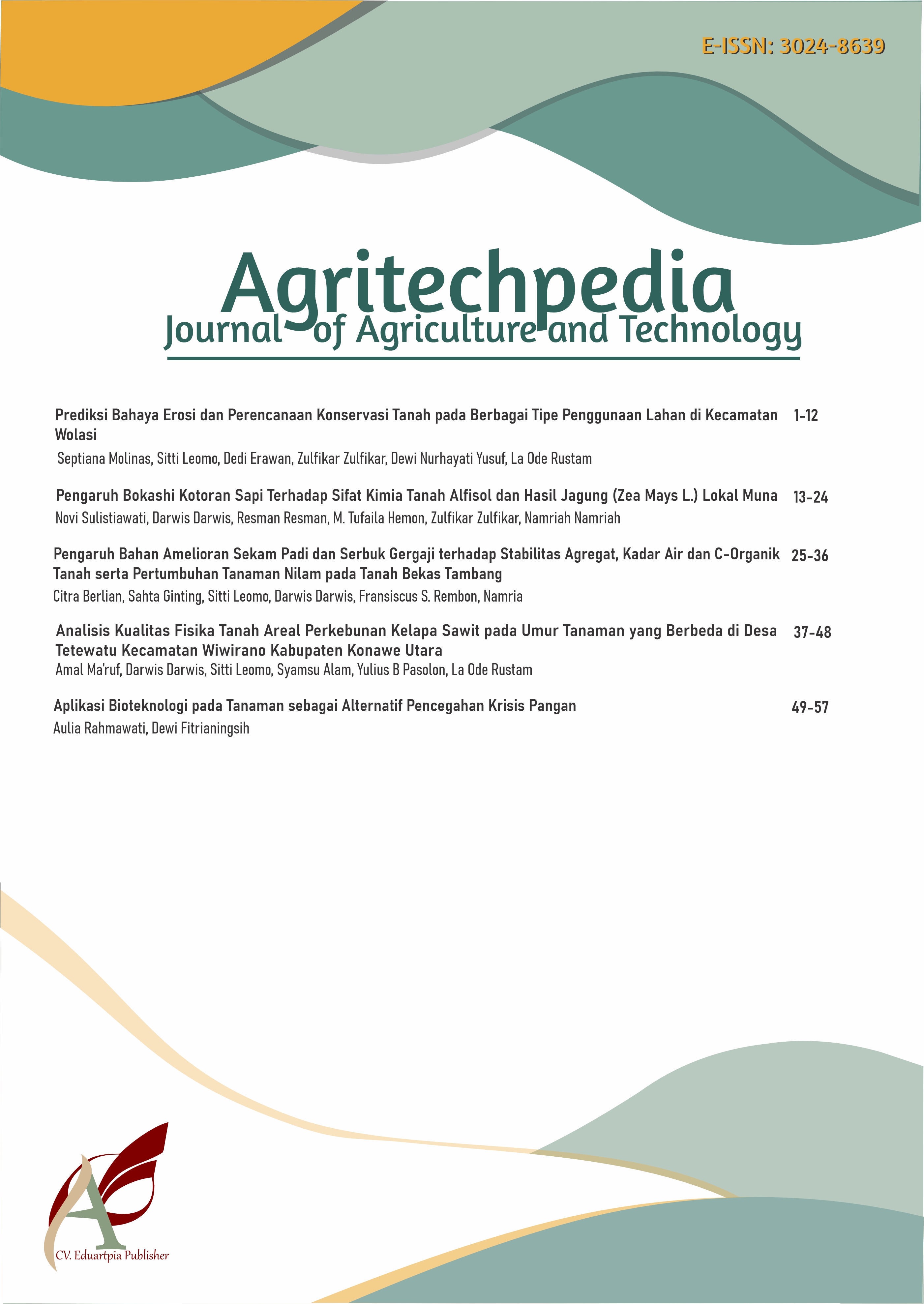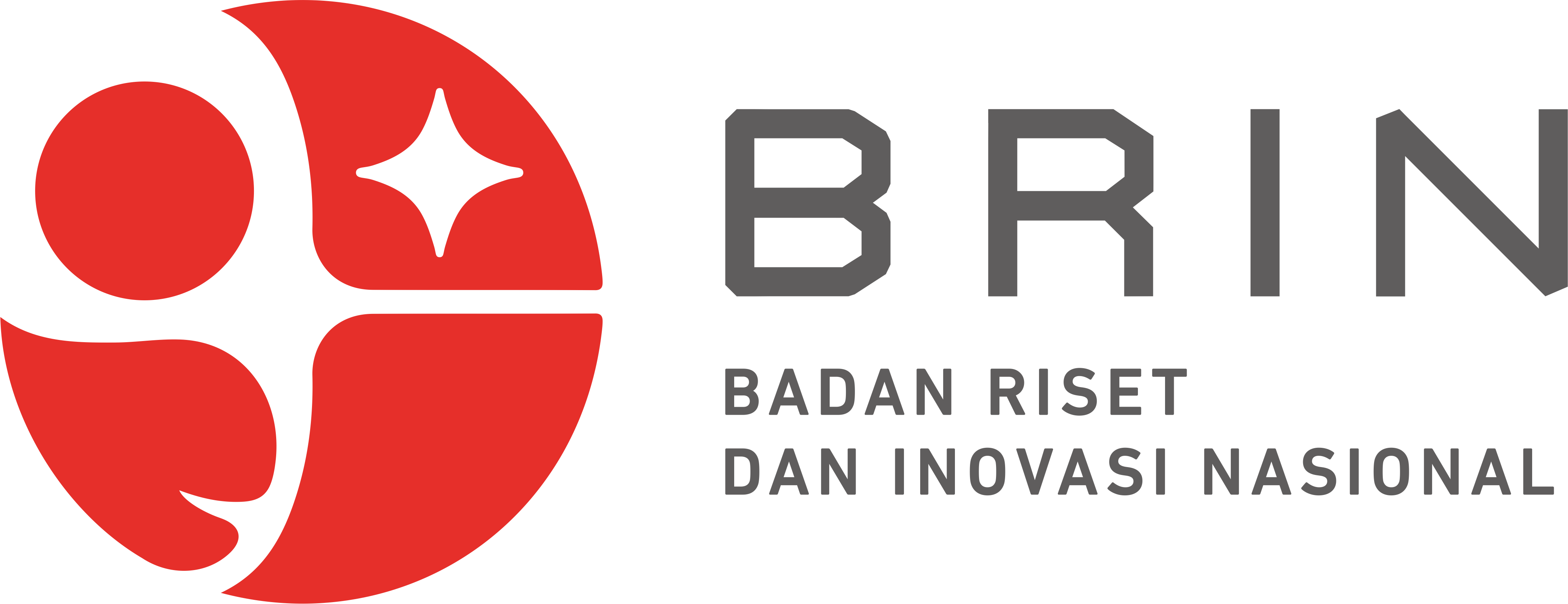Aplikasi Bioteknologi pada Tanaman sebagai Alternatif Pencegahan Krisis Pangan
Keywords:
Biotechnology, Soybean, Food, Superior varietiesAbstract
Agricultural biotechnology is a new tool for improving plants and animals. This technology uses cell DNA combination/synthesis technology to improve plants and animals or create new products. Biotechnology plant products approved for food have the following properties: 1) resistance to pests and diseases, 2) resistance to herbicides, 3) changes in diet, and 4) increased resource-conserving concentrations. Rapid population growth is currently a major challenge for the food industry. After rice and corn, soybeans are an important commodity. This species is considered an important protein source and raw material for various food and feed industries. The need for some products cannot be fulfilled domestically, so they have to be imported. To overcome these problems, technological readiness (creation of tolerant superior varieties and use of biological fertilizers) and the promotion of cultivation technology to increase productivity towards self-sufficiency are very reasonable. The purpose of compiling this journal is to provide information about improving the quality of crop production through the use of biotechnology in overcoming food scarcity. Plants that are almost experiencing scarcity are carried out by efforts to preserve germplasm. Biotechnology is an alternative genetic engineering technology that is able to overcome the problem of food crisis by increasing crop productivity.
Keywords: Biotechnology, Soybean, Food, Superior varieties
References
Afza, H. 2016. Peran Konservasi dan Karakterisasi Plasma Nutfah Padi Beras Merah dalam Pemuliaan Tanaman. Litbang Pertanian, 35(3), 143-153
Astuti, M. 2012. Peran Industri Dalam Pengembangan Kedelai Lokal Untuk Mewujudkan Swasembada Kedelai 2014. Diskusi Ketahanan Pangan, Kerjasama BPPT dan MAPIPTEK, Jakarta, 7 Agustus 2012.
Bioindustri Nusantara, PT. 2012. Biobus. http://www.ptbionusa.com p_biobus. php, diakses
November 2022).
Bumi Lestari Sejahtera, CV. 2012. Biokom® dan Ultramic® Pupuk Hayati. http://www.pupukhayati.co.id diakses 26 November 2022).
Deswina. 2009. Komersialisasi produk rekayasa genetika di Indonesia: mungkinkah? BioTrends, 4(1), 40-42
Jena, Y. 2017. Pembingkaian sebagai sikap etis terhadap tiga problem yang ditimbulkan bioteknologi. Ilmu Ushuluddin, 4(2), 143-157
Karmana I.W. 2009. Adopsi Tanaman Transgenik dan Beberapa Aspek Perkembangannya. Gane Swara. (3) (2) : 12 - 21.
Komalasari, R., Sariwati, E., & Wahyudin, R. (2022). Pemetaan tugas akhir mahasiswa Institut Pertanian Bogor komoditas sagu (Metroxylon sagu Rottb.) sampai tahun 2021. Jurnal Pustakawan Indonesia, 21(2), 88-108
Lubis, K. 2005. Pemuliaan Tanaman dan Biologi Molekuler. Materi Pendidikan Program Studi
Pemuliaan Tanaman. Medan: Fakultas Pertanian, Universitas Sumatera Utara.
Martoni, O. (2019). Pengaruh perubahan kebijakan teknologi dalam mengatasi kekurangan gizi, kelaparan dan rawan pangan. Jurnal PAPATUNG, 2(2), 108-118
Pratiwi, R.H. (2010). Peranan bioteknologi dalam mengatasi multikrisis. Jurnal Ilmiah Factor Exacta, 3(2), 158-166
Rahmawati, A., Ngaisah, N. F., & Ismaidah. (2023). Kajian Upaya Peningkatan Buah Mangga dengan Aplikasi Bioteknologi Menggunakan Kultur In Vitro pada Tanaman. Journal of Agribusiness Science and Rurak Development (JASRD), 2(2), 62–69.
Rahmawati, A., & Susanto, A. (2022). Kajian Karakteristik Abnormalitas Tanaman Kelapa Sawit (Oil Palms). Agronu: Jurnal Agroteknologi, 1(02), 80–86. https://doi.org/10.53863/agronu.v1i02.443
Suryanegara I.W. 2011. Optimisme dan Pesimisme Rekayasa Genetika.Available at.
Tando, E., & Juradi, M.A. (2019). Upaya peningkatan kualitas tanaman kedelai (Glycine max L. Merill) melalui pemanfaatan bioteknologi dalam mengatasi kelangkaan pangan. Agrotek: Jurnal Ilmiah Ilmu Pertanian, 3(2), 113-137
Wasilah, U., Rohimah, S., & Su’udi, M. (2019). Perkembangan bioteknologi di Indonesia. Journal of Science and Technology, 12(2), 85-90
Yuwono T. 2012. Bioteknologi Pertanian. Gadjah Mada University Press. Cetakan Ketiga. 1 - 284.
Downloads
Published
How to Cite
Issue
Section
License
Copyright (c) 2023 Aulia Rahmawati, Dewi Fitrianingsih

This work is licensed under a Creative Commons Attribution-ShareAlike 4.0 International License.
Authors retain copyright and grant the journal right of first publication with the work simultaneously licensed under a Creative Commons Attribution-ShareAlike 4.0 International License that allows others to share the work with an acknowledgment of the work’s authorship and initial publication in this journal
















